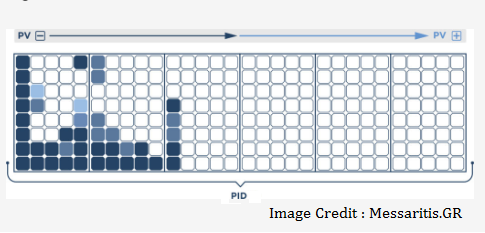PID - Potential Induced Degradation
- RenewSys India

- Apr 15, 2020
- 3 min read

Over the last two weeks, we have connected with nearly 2000 customers through our webinars, from across countries, who are curious and worried about the impact of Potential Induced Degradation (PID) in their solar systems.
This post is intended to be a simple go-to source, any time that you want to quickly recap everything you need to know about PID.
The links to the relevant webinars are also listed below.
What is PID?
PID is a phenomenon or situation that hampers solar panel performance. It causes a drop in output of a solar system that ranges anywhere between 5% to 30% or more!
How does PID occur? or What is the Mechanism of PID?
This graphic below details the mechanism of PID within a solar module or solar panel.

PID is caused by stray currents or leakage currents that occur when there is a potential difference between the solar PV cells in a solar panel and the ground.
This potential difference causes the flow of positive ions from the glass, frame and mounting structure towards the solar PV cell, and damages the cell's P-N junction.

Panels towards the negative end of a string are the ones that are directly affected as opposed to the panels at the positive end of the string.
And, the higher the number of panels connected in a string and the higher the system's voltage, the greater the possibility of a system being subject to PID. Thus the probability of PID increases from 1000 V to 1500 V.
Factors That cause PID

An interplay of several factors may cause PID. These include:
Quality of the raw materials: used in manufacturing the components of the solar panels - i.e. Glass, Encapsulant. E.g. Presence of higher amounts of sodium in the manufacture of the glass could have detrimental effects.
Quality of solar panel components: Like the Encapsulant and PV Cells used. Whether or not they have undergone extensive reliability testing and are certified as being PID resistant.
Location: Where is the solar power project installed? Latitude, longitude, local climatic conditions, along with exposure to high heat and humidity may make the solar panels more susceptible to PID.
Voltage and size of the system: The higher the system voltage the greater the probability of PID. Generally, 1500 V systems are at greater risk than 1000 V.
PID mitigation measures: Negative grounding and the presence of PID prevention devices mitigate the risk of PID related power loss.
Preventing PID
There are several aspects to consider when ensuring a PID resistant system.

Solar Panel Components - Encapsulants - Solar panel manufacturers and installers alike should insist on the use of PID resistant Encapsulants. These PID resistant Encapsulants act as an additional layer of protection against PID and guarantee higher system output across seasons. Know more...
Solar Panel Components - PV Cells - Solar Cells are primarily both the cause and the component most affected by PID. Hence it is extremely important that the cells used in a solar panel are certified PID resistant cells. To ensure that each batch of cells is PID free, additional PID testing at the solar panel manufacturers' end is also highly recommended. The testing of PV cells for PID resistance is carried out both after incorporating it in a module at regular intervals and more frequently in a specialized compact laboratory device that does not require the cells to be laminated.
Solar System Design - PV offset box/ Anti - PID/ PID resistant devices- Just like components of a solar panel, the components of a solar system are equally important in mitigating PID. Devices like the PV offset box apply reverse voltage on the system during the downtime i.e. after the sun sets ensuring that the solar panels are able to deliver their 25+ years of performance.
Solar system design - Grounding - An additional measure that is advisable from the safety and Anti-PID perspective is the negative grounding of the panels in a system.
Certification IEC 62804 & in- house solar panel testing - Lastly, a culmination of all of the measures above is the 'Certification System' that tests modules for PID resistance - IEC 62804. We strongly recommend being aware of the certification status and Bill of Materials used in the modules that you are procuring. Established solar panel or solar module manufacturers in fact have extensive in-house testing systems to ensure that their production practices are continually delivering solar panels of the highest quality.
Additional Resources
To know more about the mechanism of
PID take a look at this webinar.
To know more about the role of Encapsulants view this webinar.





